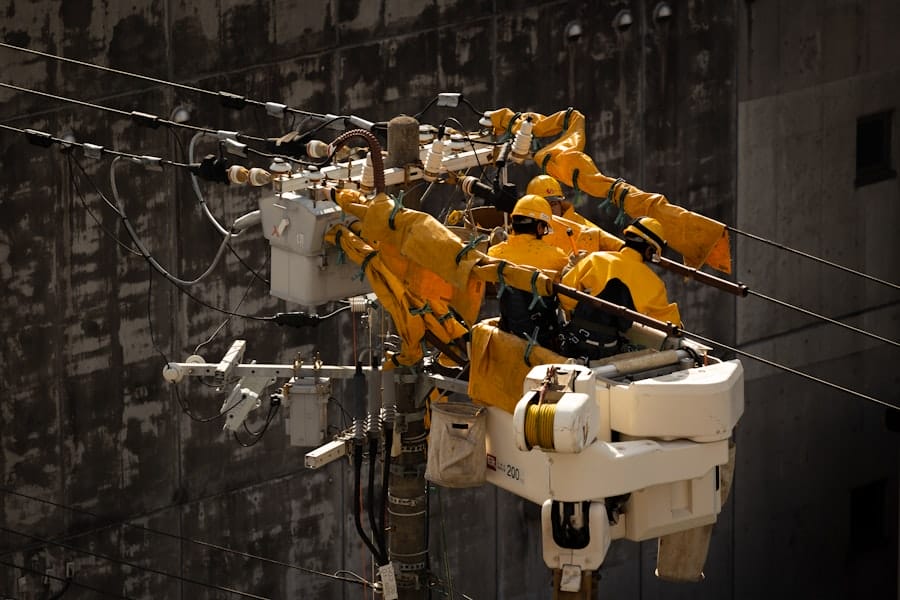Static electricity is a physical phenomenon that occurs when certain materials come into contact and exchange electrons. This electron transfer creates an imbalance in electric charge, resulting in the accumulation of static electricity. The term “static” indicates that the charge remains stationary rather than flowing as a current.
The build-up of electric charge can cause objects to attract or repel one another and may produce a spark or shock upon discharge. Static electricity is a common occurrence in daily life and can be observed in various situations, ranging from the crackling noise heard when removing a sweater to the shock experienced when touching a metal doorknob. It is important to distinguish static electricity from current electricity, which involves the flow of electric charge through a conductor.
While static electricity can be problematic in some instances, it also has practical applications in various industries, including printing and manufacturing processes.
Key Takeaways
- Static electricity is the build-up of electric charge on the surface of objects, which can be caused by friction, induction, or conduction.
- The study of static electricity dates back to ancient Greece, with early experiments conducted by Thales of Miletus and William Gilbert.
- Common examples of static electricity in everyday life include lightning, the shock you feel after walking on carpet, and the attraction of hair to a comb.
- The science behind static electricity involves the movement of electrons between objects, leading to an imbalance of positive and negative charges.
- Practical applications of static electricity include electrostatic painting, air purification, and photocopiers.
- Safety precautions for static electricity include grounding, bonding, and using anti-static materials to prevent fires and explosions.
- Future developments in the study of static electricity may lead to advancements in energy storage, pollution control, and medical technology.
Historical Background of Static Electricity
Early Observations and Discoveries
The ancient Greeks discovered that rubbing amber with fur would cause it to attract lightweight objects, a phenomenon they called “electron” after the Greek word for amber. This early observation was a crucial step in understanding the principles of static electricity.
17th and 18th Century Breakthroughs
In the 17th century, English scientist William Gilbert conducted extensive experiments on static electricity and magnetism, leading to the publication of his groundbreaking work “De Magnete” in 1600. Gilbert’s work laid the groundwork for the modern understanding of electricity and magnetism, earning him the title “father of electrical engineering.” In the 18th century, Benjamin Franklin conducted his famous kite experiment, demonstrating the connection between lightning and electricity. Franklin’s work led to the invention of the lightning rod, which is still used today to protect buildings from lightning strikes.
Paving the Way for Further Advancements
These early discoveries paved the way for further advancements in the study of static electricity and its practical applications. The foundation laid by these pioneers has enabled us to continue exploring and understanding the principles of static electricity, leading to numerous innovations and improvements in various fields.
Common Examples of Static Electricity in Everyday Life

Static electricity is a common occurrence in everyday life and can be observed in a variety of situations. One of the most common examples of static electricity is the shock felt when touching a metal object after walking on carpet. This occurs when the body builds up a negative charge from friction with the carpet, and then discharges it upon touching a conductor such as a metal doorknob.
Another common example is the crackling sound and sparks that occur when taking off a sweater or removing a blanket from a bed. This is caused by the friction between the materials, which results in the transfer of electrons and the build-up of static electricity. Static electricity can also be observed in nature, such as when lightning occurs during a thunderstorm.
Lightning is a massive discharge of static electricity that can be seen and heard for miles around. Additionally, static electricity is used in everyday objects such as photocopiers and laser printers, where it is used to attract toner particles to paper. These examples demonstrate the wide range of situations in which static electricity can be observed in everyday life.
The Science Behind Static Electricity
| Concept | Explanation |
|---|---|
| Electrons | Negatively charged subatomic particles that can move from one object to another |
| Protons | Positively charged subatomic particles that remain in the nucleus of an atom |
| Attraction | Oppositely charged objects are attracted to each other |
| Repulsion | Similarly charged objects repel each other |
| Triboelectric effect | The phenomenon where certain materials become electrically charged when they are rubbed against a different material |
The science behind static electricity lies in the transfer of electrons between two materials. When two materials are rubbed together, such as a sweater and a blanket, electrons are transferred from one material to the other. This transfer creates an imbalance of electric charge, with one material becoming positively charged and the other becoming negatively charged.
The build-up of static electricity can cause objects to attract or repel each other, depending on their respective charges. The strength of the static charge depends on several factors, including the materials involved, the amount of friction, and the humidity in the air. Materials that are good insulators, such as rubber and plastic, tend to build up more static electricity than conductive materials like metal.
Additionally, dry air allows for better build-up of static electricity compared to humid air. Understanding these factors is crucial for controlling and harnessing static electricity for practical applications.
Practical Applications of Static Electricity
Static electricity has practical applications in various industries, including printing, manufacturing, and cleaning. In the printing industry, static electricity is used to attract toner particles to paper in photocopiers and laser printers. This process allows for precise and efficient printing without smudging or smearing.
In manufacturing, static electricity is used to remove dust and debris from surfaces before painting or coating, ensuring a clean and smooth finish. Additionally, static electricity is used in air filtration systems to attract and capture airborne particles for cleaner air. Another practical application of static electricity is in electrostatic painting, where an electric charge is applied to paint particles to attract them to a surface.
This process results in an even coating with minimal overspray, making it an efficient and cost-effective method for painting large surfaces. These practical applications demonstrate the importance of understanding and harnessing static electricity for various industrial processes.
Safety Precautions and Hazards Associated with Static Electricity

Risk of Fire and Explosion
One of the primary hazards associated with static electricity is the risk of fire or explosion in environments where flammable gases or vapors are present. In such environments, static electricity can ignite flammable materials if not properly controlled.
Preventing Electric Shock
Another safety concern related to static electricity is the risk of electric shock when handling charged objects. This risk is particularly relevant in industries where workers come into contact with charged materials or equipment. Proper training and safety protocols are essential for minimizing the risk of electric shock and ensuring a safe working environment.
Mitigating Safety Hazards
To mitigate the risks associated with static electricity, safety measures such as grounding and bonding are used to dissipate static charges and prevent sparks from occurring. Additionally, precautions such as wearing antistatic clothing and using ionizers can help reduce the build-up of static electricity and mitigate safety hazards.
Future Developments in the Study of Static Electricity
The study of static electricity continues to evolve with advancements in materials science and technology. Researchers are exploring new materials and techniques for controlling and harnessing static electricity for practical applications. For example, there is ongoing research into developing antistatic coatings that can prevent the build-up of static charge on surfaces, reducing the risk of hazards and improving product performance.
Furthermore, advancements in nanotechnology have opened up new possibilities for utilizing static electricity at the nanoscale. Researchers are investigating how static electricity can be used to manipulate and assemble nanoparticles for various applications, such as drug delivery systems and electronic devices. These developments hold promise for creating innovative solutions that leverage the unique properties of static electricity for future technologies.
In conclusion, static electricity is a fascinating phenomenon with a rich historical background and diverse practical applications. Understanding the science behind static electricity is crucial for harnessing its potential while mitigating safety hazards. As research in this field continues to advance, we can expect to see new developments that leverage static electricity for innovative technologies and solutions in various industries.
FAQs
What is static electricity?
Static electricity is the build-up of electric charge on the surface of an object. This charge remains in place until it is discharged, such as through a spark or by touching another object.
How is static electricity generated?
Static electricity is generated when certain materials are rubbed together, causing electrons to be transferred from one material to the other. This transfer of electrons creates an imbalance of electric charge, resulting in static electricity.
What are some common examples of static electricity in everyday life?
Common examples of static electricity in everyday life include the static cling of clothes coming out of the dryer, the shock experienced when touching a metal object after walking on carpet, and the attraction of hair to a balloon that has been rubbed on a sweater.
What are the potential dangers of static electricity?
While static electricity itself is generally harmless, it can pose a danger in certain situations. For example, in industrial settings, static electricity can lead to sparks that may ignite flammable materials or gases. It can also cause damage to sensitive electronic equipment.
How can static electricity be controlled or discharged?
Static electricity can be controlled or discharged through various methods, such as using antistatic materials, grounding objects to dissipate the charge, or using ionizers to neutralize the electric charge. In industrial settings, proper grounding and bonding procedures are often used to prevent static electricity-related hazards.

